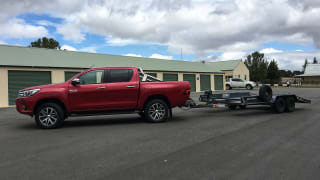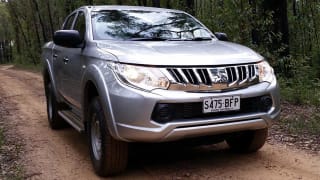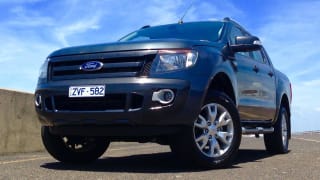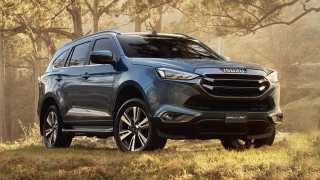The Navara's slightly firmer unladen ride will probably go unnoticed by most owners. Acceleration is brisk and braking is good but the steering has an overly heavy or ‘dead weight' feel to it that remains linear regardless of road speed.
It feels outdated compared to the latest variable-ratio electric and hydraulic systems in rivals, which are very light at parking speeds and become firmer as speeds rise.
However, the ST-X is still a competent and comfortable highway cruiser with only 1800rpm at 100km/h and 2000rpm at 110km/h which right in middle of its 1500-2500rpm torque zone. We noticed a bit of wind noise at these speeds, mostly around the large door mirrors, but tyre noise and other sources of NVH were pleasantly low. Unladen ride quality was generally good with a slightly jittery feel on some surfaces due to the firmer suspension.
We then loaded 770kg into the cargo bed, which with a 92kg driver was a payload of 862kg, or just under 80kg less than its 941kg peak payload rating. Despite the slightly stiffer rear springs the Navara displayed a similar tail-down-nose-up stance to its predecessor, with the front rising 15mm and the rear dropping 80mm.
The 2.3-litre twin-turbo diesel and seven-speed auto proved a good team on our long 14 per cent gradient set climb.
Given that the ST we tested in 2016 compressed 120mm with about 60kg less load, this may seem like an improvement in springing support. However, the ST was fitted with 16-inch diameter wheels (50mm smaller diameter than the ST-X's 18s) and we always measure from the top of the wheel rim to the wheel arch lip, so it's much the same.
A look under the tail also revealed that, like its predecessor, the rear coils had compressed to a point where the load was again largely being supported by the solid rubber cones which sit outboard of the coils on each side of the axle housing. Although these are designed to progressively engage with the chassis rails as a second stage of damping under heavy loads, it is still in effect like riding on extended bump stops.
Even so, the 2.3-litre twin-turbo diesel and seven-speed auto proved a good team on our long 14 per cent gradient set climb with more than three quarters of a tonne on board; the ample 450Nm of torque easily maintaining the 60km/h speed limit at 2000rpm in sixth gear all the way to the top.
Its engine braking was also impressive for such a small capacity engine, with only the occasional brush of the brake pedal required to peg over-run at 4000rpm (4500rpm redline).















